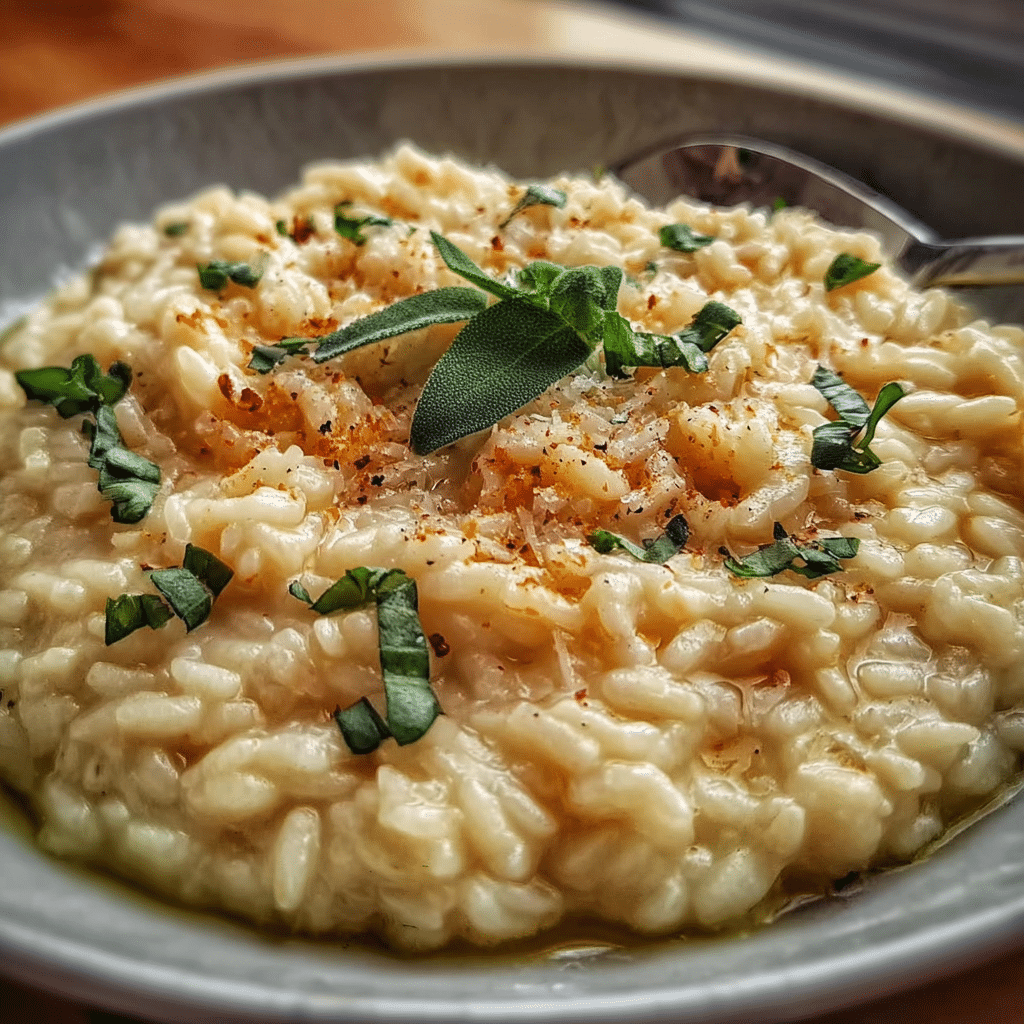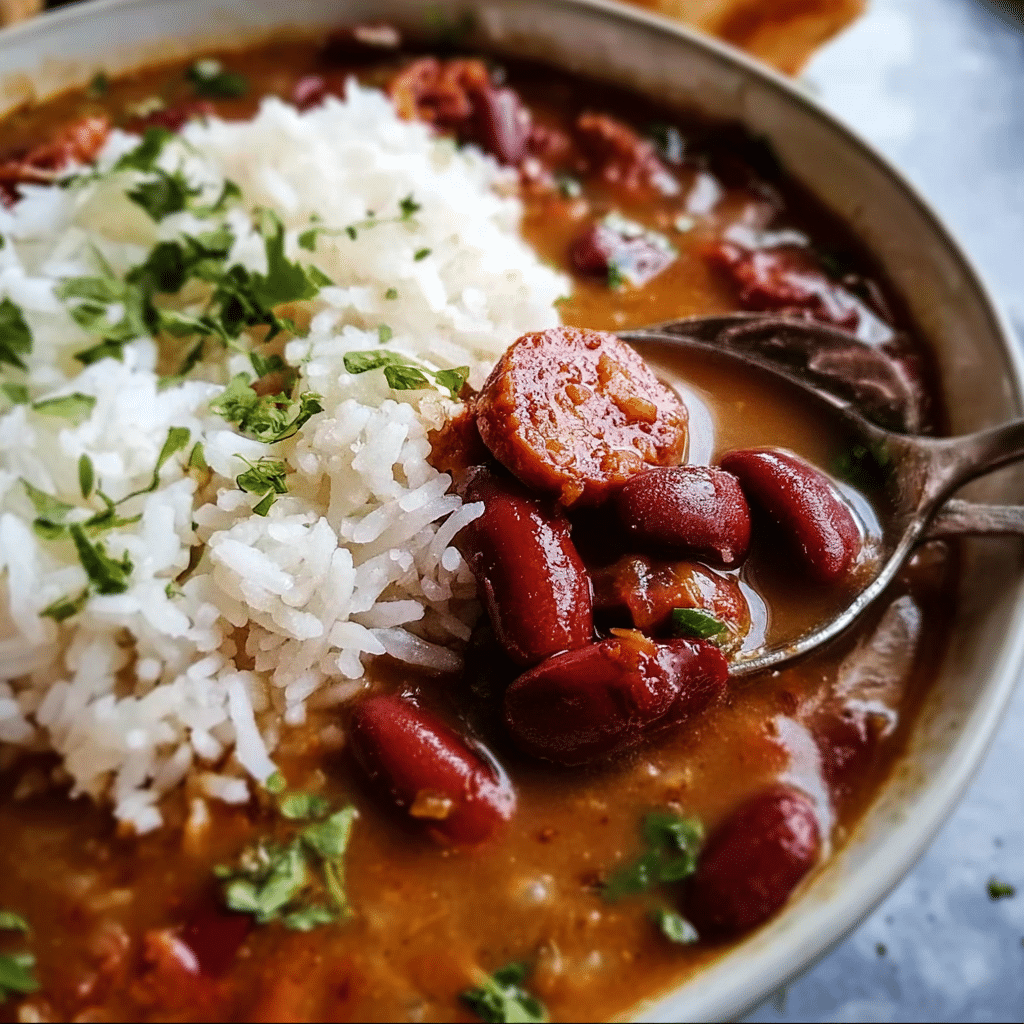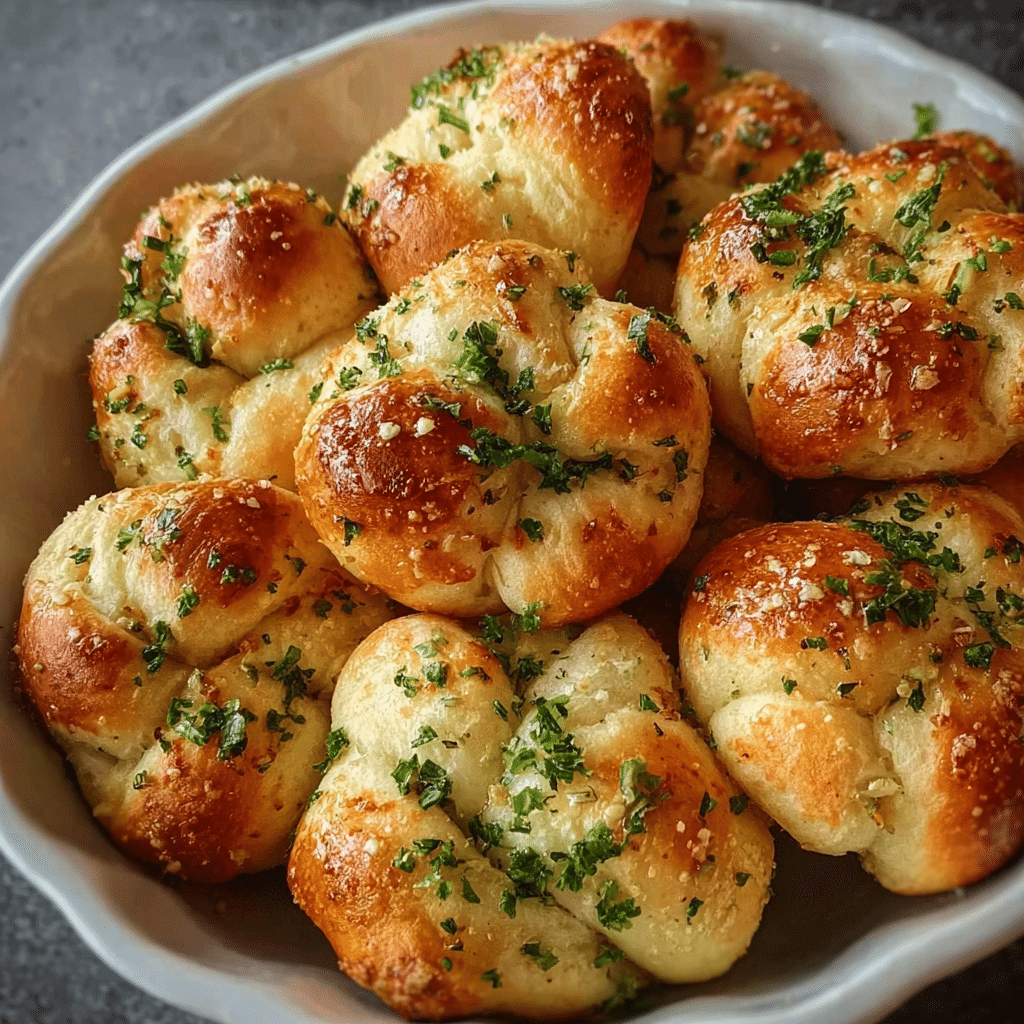Homemade chicken noodle soup is more than just a comforting dish; it embodies warmth, nostalgia, and the essence of home. Growing up, my family had a tradition every winter weekend where we’d gather in the kitchen, the aroma of simmering broth wrapping around us like a cozy blanket. My mother’s version was a labor of love, made from scratch with fresh ingredients and patience, and it became a cherished ritual during the cold months. The experience of watching her expertly chop vegetables, season the broth, and stir in the noodles felt like a magical process. Each bowl served was not just a meal; it was a warm hug in a bowl that brought us together. Today, I want to share the secrets behind this beloved recipe, which has evolved into my own version of homemade chicken noodle soup.
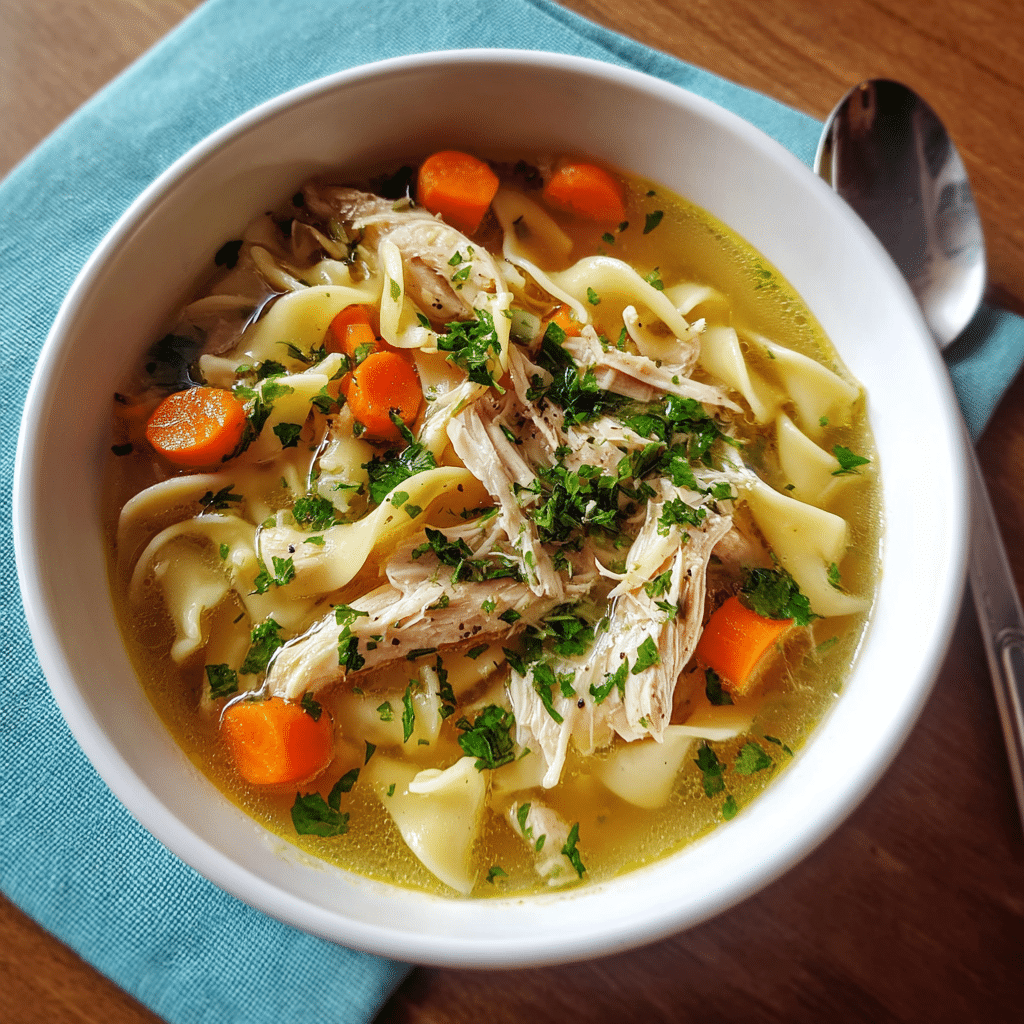
The Story Behind This Recipe
As I grew older and moved away from home, I found myself craving that familiar taste of my mother’s soup. It was during one particularly chilly night in my apartment that I decided to recreate her recipe. Armed with my grandmother’s old handwritten notes and a sense of determination, I went to the grocery store and gathered all the necessary ingredients: a whole chicken, fresh vegetables, herbs, and, of course, noodles. I spent hours in my tiny kitchen, reminiscent of those childhood weekends, stirring the pot and letting the flavors meld. When the soup was finally ready, I ladled it into a bowl, took a sip, and was transported back to those winter afternoons. The warmth spread through me, and I knew I had successfully captured the essence of homemade chicken noodle soup.
What makes this recipe special is not just the ingredients but the love and care infused in every step. While there are countless variations of chicken noodle soup out there, this one stands out because it allows the flavors to shine through without overwhelming the palate. It’s simple yet filling, making it perfect for busy families looking for quick dinner solutions. You can whip up a batch on a Sunday and have leftovers for the week, giving you more time to spend with your loved ones rather than slaving over the stove each night.
Why You’ll Love This Dish
One of the beautiful things about homemade chicken noodle is its seasonal relevance. While it’s a classic cold-weather dish, I’ve found that it can be enjoyed year-round. In the spring, I like to incorporate fresh herbs like parsley and dill, while in the summer, I might add a twist by including zucchini or corn. Each season brings a new opportunity to experiment, keeping the dish vibrant and exciting.
But beyond its versatility, there’s an emotional connection tied to homemade chicken noodle. It’s a dish that has seen families through tough times, celebrated joyous occasions, and comforted those feeling under the weather. It’s often said that food is a love language, and that couldn’t be more accurate in this case. Whenever I share a bowl with friends or family, I see their faces light up, and I know I’m giving them a little piece of home.
In this guide, readers will learn not only how to make their own homemade chicken noodle soup but also tips on how to customize the recipe to fit their tastes and dietary needs. I’ll share my secrets to achieving the perfect broth, the best way to cook the chicken, and how to ensure your noodles don’t turn mushy. Additionally, we’ll explore the variations that have emerged from different cultures and regions, making this dish a true global treasure. So grab your apron, and let’s dive into the world of homemade chicken noodle soup!
The Rich History and Cultural Significance of homemade chicken noodle
The rich history of homemade chicken noodle soup traces back centuries, with its origins deeply rooted in various culinary traditions. While it’s difficult to pinpoint the exact moment this dish came to be, it is widely believed that variations of chicken soup have existed since ancient times, serving as a nourishing remedy for ailing individuals. The earliest records of chicken soup date back to the Roman Empire, where it was praised not only for its flavor but also for its health benefits. Over the years, different cultures have put their unique spin on this comforting dish, leading to the diverse interpretations we enjoy today.
Origins and History
In many cultures, chicken soup is considered a dish that provides comfort and healing. The Jewish tradition is particularly notable, as chicken soup, often referred to as “Jewish penicillin,” is a staple in many households, especially during Shabbat. The recipe has been passed down through generations, often made with matzo balls and served during significant family gatherings. It’s a dish that not only nourishes the body but also the soul, reminding us of family bonds and cultural heritage.
In Chinese cuisine, a different approach is taken with homemade chicken noodle. Here, the focus is on using fresh ingredients and aromatics like ginger and garlic to create a flavorful broth. The addition of noodles, whether egg noodles or rice noodles, varies by region, showcasing the adaptability of this beloved dish. It’s fascinating to see how the basic concept of chicken soup transcends borders, adapting to local tastes and traditions.
Cultural Significance
The cultural significance of homemade chicken noodle soup cannot be overstated. It is a dish that appears in almost every cuisine, each with its own unique story and preparation methods. In the Southern United States, for example, chicken noodle soup often includes hearty vegetables and a rich broth, embodying the essence of comfort food that is perfect for family gatherings. Meanwhile, in Italy, you might find a version that incorporates fresh pasta, herbs, and a hint of lemon, showcasing a different approach to the same fundamental ingredients.
Many families serve homemade chicken noodle soup during special occasions, whether it’s to celebrate a milestone or to provide comfort during difficult times. It has become a symbol of care and compassion, as it’s often prepared for those who are unwell. This dish is not just a meal; it’s an expression of love that transcends cultures and generations.
Nutritional Benefits
From a nutritional standpoint, homemade chicken noodle soup is packed with health benefits. Chicken is an excellent source of lean protein, which is vital for muscle repair and overall health. The vegetables included in the soup, such as carrots, celery, and onions, offer a range of vitamins and minerals, contributing to a balanced diet. The broth, particularly when made from scratch, is rich in collagen and nutrients extracted from the chicken bones, making it a wholesome option for those looking to boost their immune system.
Moreover, homemade chicken noodle soup is often low in calories, making it an ideal dish for those watching their weight. With the flexibility to include a variety of vegetables and whole-grain noodles, this soup can be tailored to meet different dietary preferences, ensuring that everyone can enjoy a bowl of comfort. As we delve deeper into the world of homemade chicken noodle soup, you’ll discover not only the joy of cooking but also the incredible health benefits this timeless dish has to offer.
Essential Ingredients for Perfect homemade chicken noodle
When it comes to creating the perfect bowl of homemade chicken noodle soup, the foundation lies in the quality and selection of your ingredients. This comfort food classic is not just about throwing everything into a pot; it’s about understanding the role each ingredient plays in building flavor and nutrition. Let’s dive into the essential ingredients that will make your soup not just good, but truly exceptional.
Essential Ingredients
Here is a complete list of ingredients you’ll need for your homemade chicken noodle soup, along with detailed measurements:
- 1 tablespoon olive oil
- 1 medium onion, diced
- 2 medium carrots, sliced
- 2 stalks celery, sliced
- 3 cloves garlic, minced
- 8 cups chicken broth or stock
- 2 cups cooked chicken, shredded (preferably rotisserie or leftover)
- 1 teaspoon dried thyme
- 1 teaspoon dried parsley
- Salt and pepper to taste
- 8 ounces egg noodles
- Juice of 1 lemon (optional)
- Fresh parsley for garnish (optional)
Each ingredient in this list contributes uniquely to the overall flavor profile and texture of your homemade chicken noodle soup.
- Olive Oil: This serves as the base for sautéing your vegetables, adding rich flavor and helping to soften them.
- Onion: A foundational flavor, onion provides a sweetness that balances the dish. Use a yellow onion for the best results.
- Carrots and Celery: These vegetables bring sweetness and crunch, essential for the classic “mirepoix” base of many soups.
- Garlic: Adds depth and aroma; fresh garlic is preferable for its vibrant flavor.
- Chicken Broth: The heart of your soup, broth provides moisture and flavor. Homemade broth is best, but quality store-bought options are available.
- Cooked Chicken: You can use leftover chicken or a rotisserie chicken for convenience. Shredded chicken integrates well into the soup, providing protein and substance.
- Dried Thyme and Parsley: These herbs add earthiness and enhance the overall flavor. Fresh herbs can be used as well, but dried are often more convenient.
- Salt and Pepper: Essential for seasoning; taste as you go to ensure the soup is well-balanced.
- Egg Noodles: These are traditional for chicken noodle soup and provide a comforting, chewy texture.
- Lemon Juice: A splash of acid brightens the soup and enhances the other flavors.
- Fresh Parsley: For garnish, it adds color and a fresh flavor contrast.
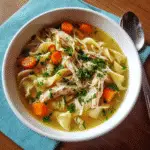
Homemade Chicken Noodle Recipe
Ingredients
For the Soup:
- 1/2 Tablespoon butter
- 2 ribs celery , diced
- 3–4 large carrots diced
- 1 clove garlic , minced
- 10 cups chicken stock , or broth*
- 1 teaspoon salt , to taste
- ½ teaspoon freshly ground black pepper , to taste
- 1/8 teaspoon dried rosemary ,or more, to taste
- 1/8 teaspoon dried thyme
- 1/8 teaspoon crushed red pepper flakes
- 1 batch homemade egg noodles , or 4 cups dry egg noodles, farfalle or other bite-size pasta
- 3 cups rotisserie chicken *
- 1 teaspoon better than bouillon chicken flavor , (or more, as needed), or chicken bouillon granules
Instructions
- Add butter, diced celery and carrots to a large stock pot over medium-high heat. Saute for 3 minutes. Add garlic and cook for another 30 seconds.
- Add chicken stock and season the broth with rosemary, thyme, crushed red pepper, and salt (definitely TASTE the broth before adding more salt), and pepper. Taste and add a spoonful of “better than bullion” chicken or chicken bouillon cubes or granules as needed.
- Bring broth to a boil. Add noodles (either uncooked homemade egg noodles, or dry store-bought pasta) and cook just until noodles are al dente.
- If using store-bought noodles, be cautious not to overcook them! Remove pot from heat as soon as they are just barely tender. The noodles will continue to cook once you remove the pot from the heat, and you don’t want them mushy.
- Add chicken meat from the rotisserie chicken. Taste the broth again and add more seasonings, if needed.
- Store leftovers in an airtight container in the refrigerator for 4-5 days, depending on the freshness of the chicken you used.
Shopping Tips
When sourcing ingredients for your homemade chicken noodle soup, quality is key. Here are some tips to help you choose the best:
- Chicken: Look for organic or free-range chicken when possible. This not only supports better farming practices but also provides more flavor. Check for a fresh, clean smell and firm, pink flesh.
- Vegetables: Fresh produce is vital for flavor. Choose firm, vibrant carrots and celery. Onions should be dry and firm, avoiding any that are sprouting or soft.
- Broth: If using store-bought broth, opt for low-sodium varieties which allow you to control the saltiness of your soup better. Check the ingredient list for natural ingredients.
Substitutions and Alternatives
Cooking is all about creativity and adaptability, especially when making homemade chicken noodle soup. Here are some substitutions and considerations for dietary restrictions:
- Gluten-Free: Substitute traditional egg noodles with gluten-free pasta or rice noodles. You may need to adjust cooking times accordingly.
- Vegetarian/Vegan: Omit the chicken and use vegetable broth. Add beans or lentils for protein, and consider adding more vegetables for a hearty soup.
- Low-Sodium: Use low-sodium broth and limit added salt. Fresh herbs can enhance flavor without the need for extra salt.
Storage is also crucial for maintaining ingredient quality. Store vegetables in the fridge crisper drawer, and keep cooked chicken in an airtight container. Broth can be stored in the fridge for a few days or frozen for longer-term use.
Finally, consider organic versus conventional options. Organic vegetables and chicken can be more flavorful and are often free from harmful pesticides, making them a worthy investment for your homemade chicken noodle soup.
With these tips and detailed ingredient insights, you’ll be well on your way to making a comforting and delicious bowl of homemade chicken noodle soup that not only warms the body but also nourishes the soul.
Detailed Step-by-Step homemade chicken noodle Cooking Instructions
Creating a delightful bowl of homemade chicken noodle soup is not just about the ingredients; it’s also about the process. Cooking is an art, and taking the time to understand each step will elevate your dish from ordinary to extraordinary. Let’s dive into the detailed step-by-step cooking process that will guide you through making the best homemade chicken noodle soup ever.
Preparation Steps
- Mise en Place: Before you start cooking, gather all your ingredients. Chop the onions, carrots, and celery, and mince the garlic. Having everything ready will streamline your cooking process.
- Cook the Chicken: If you’re using raw chicken, you can poach it in the broth for about 20 minutes until cooked through. Remove, let it cool, and shred it. If using leftover or rotisserie chicken, simply shred it and set it aside.
- Prepare Your Broth: If you’re using homemade broth, this is the time to heat it up in a large pot. Store-bought broth can also be used, but make sure to choose a quality brand.
Cooking Process
Now, onto the cooking part! This is where the magic happens, and the aroma of homemade chicken noodle soup fills your kitchen.
- Sauté the Aromatics: Heat 1 tablespoon of olive oil in a large pot over medium heat. Add diced onions, carrots, and celery, cooking for about 5-7 minutes until they soften. Stir in the minced garlic and cook for another minute until fragrant. This step builds the base flavor of your soup.
- Add the Broth: Pour in the heated chicken broth. Bring it to a gentle boil.
- Add the Noodles: Once boiling, add the egg noodles to the pot. Cook according to package instructions, usually around 6-8 minutes. Make sure to stir occasionally to prevent sticking.
- Incorporate the Chicken: After the noodles are cooked, add the shredded chicken back into the pot. This is the moment when your soup becomes a meal!
- Season the Soup: Add the dried thyme and parsley, salt, and pepper to taste. This is also a good time to add a splash of lemon juice if using. Stir well and let it simmer for another 5 minutes to marry the flavors.
Final Assembly
As you reach the end of the cooking process, it’s time to assemble and serve your homemade chicken noodle soup.
- Taste and Adjust: Always taste your soup before serving. Adjust seasoning as necessary, adding more salt, pepper, or lemon juice to brighten the flavors.
- Garnish: Ladle the soup into bowls and sprinkle fresh parsley on top for a pop of color and freshness.
- Serve: Enjoy your homemade chicken noodle soup hot, preferably with a side of crusty bread or crackers to soak up the delicious broth.
Throughout the cooking process, remember that visual cues are essential. Look for that golden color in the sautéed vegetables, and ensure the chicken is fully cooked and shreds easily. If you notice the soup is too thick, you can always add more broth or water to reach your desired consistency.
Common mistakes to avoid include overcooking the noodles, which can turn mushy, and not seasoning adequately, which can lead to a bland dish. Professional chefs often recommend tasting at various stages to ensure the flavors develop beautifully.
This homemade chicken noodle soup takes about 30 minutes to prepare and cook, making it a perfect weeknight meal. With these detailed instructions, you’re set to create a comforting, nourishing dish that embraces the warmth of home cooking.
Professional Tips and Techniques for homemade chicken noodle
When it comes to making a comforting bowl of homemade chicken noodle soup, there’s much more to it than simply throwing chicken, noodles, and broth into a pot. With a few professional tips and techniques, you can elevate your soup from a simple meal to a dish that warms both the heart and soul. Let’s dive into some insider secrets that will help you create the ultimate homemade chicken noodle experience.
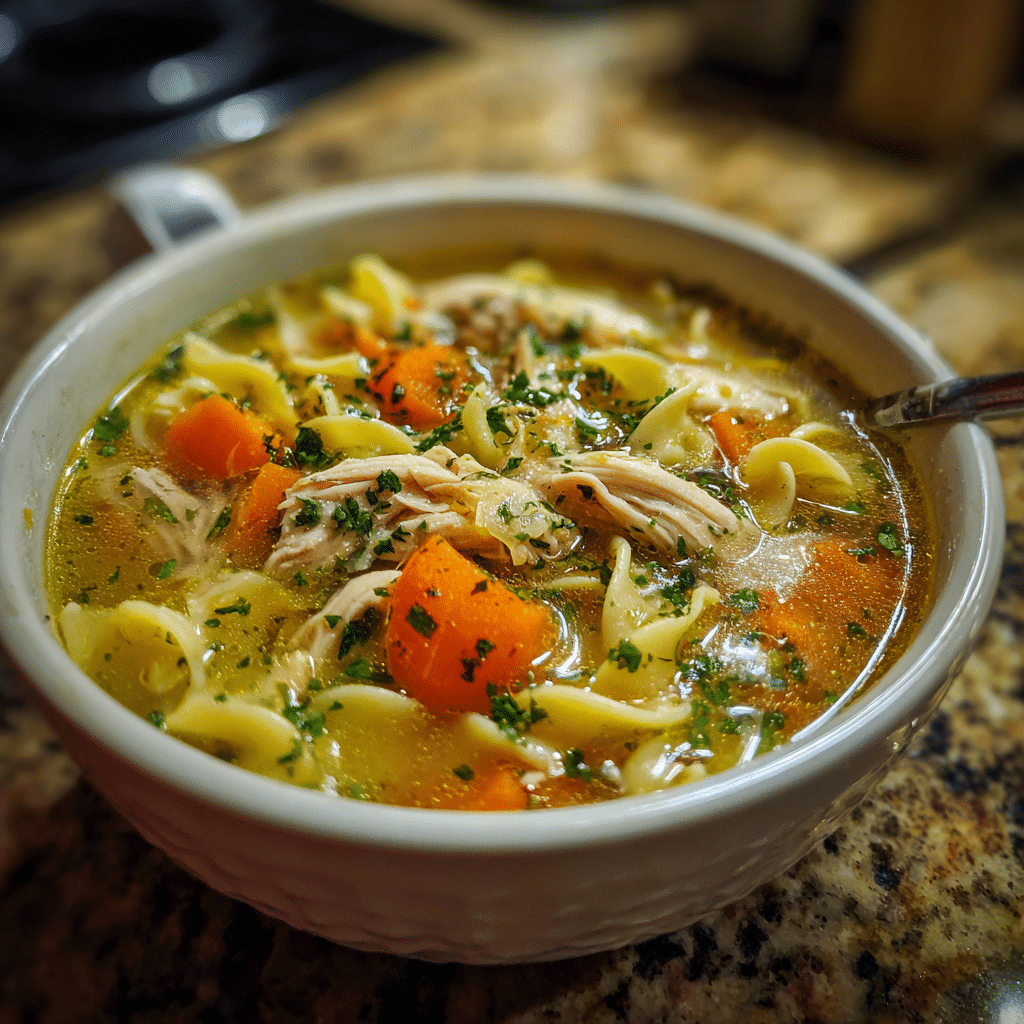
Professional Techniques
One of the first steps to mastering homemade chicken noodle soup is selecting the right chicken. While rotisserie chicken can be a convenient option, using a whole chicken offers richer flavors. Simmering the chicken on the bone allows the meat to absorb the flavors of the broth, creating a deep, rich taste. I recommend using a combination of chicken thighs and breasts; thighs lend a succulent, juicy quality, while breasts provide a leaner texture.
Next, consider your broth. Homemade broth is always preferable, as it allows for complete control over the flavor profile. To create a flavorful broth, start by roasting your chicken bones and vegetables (like onions, carrots, and celery) in the oven until golden brown. This caramelization process adds depth to the broth. After roasting, add the ingredients to a large pot, cover with water, and simmer for at least two hours. Don’t forget to skim off any foam that rises to the surface – it’s the impurities from the chicken and vegetables.
When it comes to noodles, fresh is always best. If you can, make your own noodles for the homemade chicken noodle soup. The process can be a bit labor-intensive, but the texture and flavor are unparalleled. However, if time is short, opt for high-quality egg noodles or even whole grain options for added nutrition. Remember to cook the noodles separately to prevent them from becoming mushy in the soup.
Troubleshooting Guide
Even the most experienced cooks can run into issues while preparing homemade chicken noodle soup. One common problem is a bland flavor. If you find your soup lacks depth, consider adding a splash of vinegar or a squeeze of lemon juice. These acids can brighten flavors and add a delightful zing.
If your soup turns out too greasy, it may be due to the chicken skin. To remedy this, chill the soup and skim off the fat from the surface before reheating. Conversely, if your soup is too salty, adding a peeled potato can help absorb some of the saltiness. Just be sure to remove the potato after it has cooked for a while.
Presentation Tips
homemade chicken noodle soup, especially when you’re entertaining. A rustic, hearty soup deserves rustic serving ware. Consider using a large, shallow bowl to showcase the vibrant colors of the ingredients. Garnish with freshly chopped parsley or dill for a pop of color. For an extra touch, drizzle a bit of high-quality olive oil or a dollop of crème fraîche on top just before serving.
Wine pairing can also elevate the dining experience. A light white wine, such as a Sauvignon Blanc or a lightly oaked Chardonnay, complements the flavors of chicken and broth beautifully. If you prefer something non-alcoholic, a sparkling water with a slice of lemon or cucumber can refresh the palate between bites.
Meal prep is another valuable strategy when it comes to homemade chicken noodle soup. Make a double batch and freeze half for a rainy day. Just be sure to undercook the noodles slightly if you plan to freeze the soup, as they will continue to cook during reheating. When you’re ready to enjoy your soup, simply thaw and reheat, adding fresh herbs or a squeeze of lemon to brighten it up.
Finally, adjusting the recipe to suit your needs is straightforward. Whether you’re cooking for a crowd or just one, scaling the recipe is simple. For larger gatherings, consider using a stockpot instead of a standard pot, and adjust cooking times accordingly. Conversely, if you’re cooking for one, you can easily halve the ingredients and enjoy a comforting bowl all to yourself.
Creative Variations and Adaptations of homemade chicken noodle
While nothing quite compares to a classic bowl of homemade chicken noodle soup, there are endless possibilities for creative variations and adaptations. Let’s explore some exciting twists that can breathe new life into this beloved dish while keeping the essence of comfort intact.
Seasonal Variations
One of the joys of cooking is the ability to adapt recipes to the seasons. In the fall, consider adding roasted butternut squash or pumpkin for a naturally sweet and creamy texture. This not only enhances the soup’s flavor but also adds a beautiful orange hue that is visually appealing.
In the spring, incorporating fresh peas, asparagus, and even spinach can add a burst of freshness and color to your homemade chicken noodle soup. Simply add these ingredients towards the end of cooking to preserve their vibrant colors and nutrients.
During winter, try incorporating hearty vegetables like kale or Swiss chard, which not only add nutrition but also a lovely texture. You can even throw in some winter root vegetables like parsnips or turnips for added flavor and heartiness.
Dietary Adaptations
As the world of food becomes more inclusive, it’s essential to adapt our beloved homemade chicken noodle soup to fit various dietary needs. For those following a keto diet, you can replace traditional noodles with zucchini noodles or cauliflower rice. Both options provide a satisfying texture while keeping the carb count low.
If you’re looking for a vegan version, swap the chicken for chickpeas or tofu. Use vegetable broth instead of chicken broth and load up on earthy spices like turmeric and cumin to create a depth of flavor that rivals traditional chicken noodle soup. You can also add a splash of soy sauce or tamari for that umami punch.
For gluten-free eaters, using gluten-free pasta or rice noodles can ensure everyone can enjoy a warm bowl of homemade chicken noodle soup. Just keep an eye on the cooking time, as gluten-free noodles may cook faster than their traditional counterparts.
Creative Twists
If you want to really impress your family or friends, consider adding some unexpected ingredients to your homemade chicken noodle soup. Think about incorporating a splash of coconut milk for a creamy texture and subtle sweetness. This pairs beautifully with a touch of ginger and lime, creating a Thai-inspired twist on the classic recipe.
Another creative variation is to add a bit of spice. If you enjoy a kick, toss in some diced jalapeños or a spoonful of sriracha. The heat can balance the richness of the broth and provide an exciting flavor profile that’s sure to warm you up from the inside out.
Different cooking methods can also inspire new flavors. Try making your homemade chicken noodle soup in a slow cooker for an easy, hands-off approach. Simply add all your ingredients in the morning and come home to a delicious, aromatic meal. Alternatively, making it in the oven can create a deeper flavor, as the gentle heat allows the chicken to roast while it cooks in the broth, infusing it with flavor.
Lastly, consider how to transform leftovers. If you have soup left over from the previous night, you can turn it into a delicious pot pie. Simply add a layer of puff pastry on top and bake until golden brown for a comforting meal that feels entirely new.
With these variations and adaptations, your homemade chicken noodle soup can remain a staple in your kitchen while also evolving to suit your tastes and dietary needs. Embrace the creativity and have fun experimenting!
Storage, Reheating, and Meal Prep for homemade chicken noodle
When it comes to homemade chicken noodle soup, not only is it a comforting dish that’s perfect for cold days or when you’re feeling under the weather, but it’s also an excellent candidate for meal prep and storage. Knowing how to store and reheat your soup properly can ensure that you enjoy its delicious flavors for days to come. Let’s dive into the details of storage, reheating, and meal prep strategies that can help you keep your homemade chicken noodle soup fresh and tasty.
Short-term Storage
After you’ve made a big batch of homemade chicken noodle soup, you might be wondering how best to store it in your refrigerator. The first step is to let the soup cool down to room temperature; this is crucial as placing hot soup directly into the fridge can raise the temperature inside the fridge and potentially spoil other foods. Once cooled, transfer the soup into airtight containers. Glass containers with tight-fitting lids are ideal, as they don’t absorb odors and can be reheated directly in the microwave or oven.
For short-term storage in the fridge, your homemade chicken noodle soup can typically last about 3 to 4 days. Be sure to label your containers with the date you made the soup, so you can keep track of its freshness. If you’re planning on eating the soup within that time frame, you can simply store it in individual portions, which makes it easier to grab a bowl for lunch or dinner without having to reheat the entire batch.
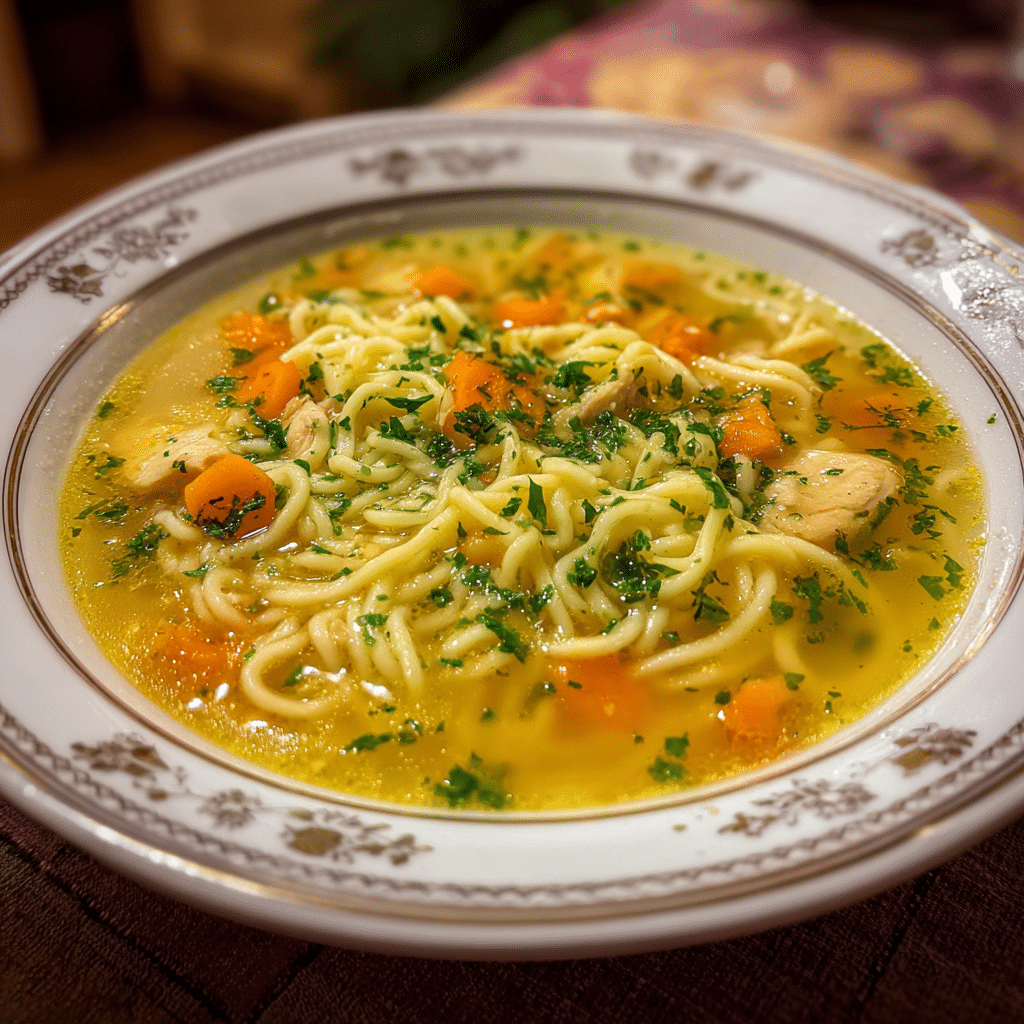
Freezing and Long-term Storage
If you find yourself with a surplus of homemade chicken noodle soup or want to prepare meals in advance, freezing is an excellent option. To freeze your soup, allow it to cool completely, then portion it out into freezer-safe containers or zip-top bags. When using bags, lay them flat in the freezer to save space and make stacking easier. It’s best to leave about an inch of space at the top of the container or bag to allow for expansion as the soup freezes.
Homemade chicken noodle soup can be frozen for up to 3 months while maintaining its best quality. However, it’s important to note that the texture of the noodles may change slightly upon reheating after freezing. If you want to combat this, consider freezing the broth and chicken separately from the noodles. You can cook fresh noodles when you decide to reheat the soup, preserving that delightful al dente texture.
Reheating Best Practices
When it’s time to enjoy your homemade chicken noodle soup again, reheating it properly will ensure that it tastes just as good as the day you made it. If you’ve stored your soup in the refrigerator, simply transfer it to a saucepan over medium heat. Stir occasionally until heated through, usually about 10-15 minutes. If you prefer a quicker method, you can also reheat it in the microwave. Pour the soup into a microwave-safe bowl, cover it with a microwave-safe lid or plate, and heat in 1-minute intervals, stirring in between until hot.
If you’ve frozen your soup, it’s best to thaw it in the refrigerator overnight before reheating. However, you can also reheat it directly from the freezer by placing it in a saucepan over low heat. Just remember to stir often to help it heat evenly. If you’ve frozen the noodles separately, cook them according to package instructions while reheating the broth, then add them to the soup just before serving.
When it comes to food safety, always ensure that your soup is heated to at least 165°F (74°C) before consuming. This temperature is crucial to kill any potential bacteria that might have developed during storage.
In terms of portioning and packaging, consider using smaller containers if you plan to eat the soup one bowl at a time. Having smaller portions will make it easier to reheat without needing to thaw a large batch. Plus, it reduces the risk of leftovers going to waste. You can also mix things up by adding different herbs or spices to each portion before reheating to keep your meals exciting!
In conclusion, with a little planning and the right techniques, you can store, freeze, and reheat your homemade chicken noodle soup without sacrificing its delicious flavors or quality. This way, you’ll always have a warm, comforting bowl ready to enjoy, no matter the time of year.
Nutritional Benefits and Health Information
Homemade chicken noodle soup is not just a treat for the taste buds but also a nourishing meal packed with a variety of nutrients. Understanding the nutritional benefits of this classic dish can help you appreciate every spoonful while making informed decisions about your diet. Let’s explore the nutritional breakdown, health benefits, and dietary considerations of homemade chicken noodle soup.
Nutritional Profile
At its core, homemade chicken noodle soup typically consists of chicken, noodles, broth, and various vegetables. The exact nutritional composition can vary based on the ingredients you choose, but let’s break down the common components. A standard serving (approximately 1 cup) of chicken noodle soup can contain around 200 calories, depending on the quantity of chicken and noodles used. A typical macronutrient distribution might include:
- Protein: 15-20 grams from chicken, providing essential amino acids for muscle repair and growth.
- Carbohydrates: 20-30 grams primarily from noodles and vegetables, offering energy and dietary fiber.
- Fat: 5-10 grams, depending on whether you use skin-on or skinless chicken and the amount of oil or butter used in the recipe.
In terms of vitamins and minerals, homemade chicken noodle soup can be a good source of B vitamins from chicken and vegetables, such as folate and vitamin B6. It also provides minerals like phosphorus, potassium, and magnesium, which are essential for various bodily functions.
Health Benefits
One of the most significant health benefits of homemade chicken noodle soup is its ability to comfort and soothe. Whether it’s the warmth of the broth or the satisfying texture of noodles, this dish can make you feel better when you’re under the weather. The soup is often recommended for colds and flu, as the steam can help clear nasal passages, while the nutrients support your immune system.
Moreover, the ingredients in chicken noodle soup offer various health benefits. Chicken is a high-quality protein source that promotes muscle health and aids in recovery. The vegetables, often including carrots, celery, and onions, are rich in vitamins and antioxidants, which can help combat inflammation and support overall health. The broth itself, particularly if made from scratch, is often rich in collagen and minerals that promote joint health.
Dietary Considerations
When it comes to dietary considerations, homemade chicken noodle soup can be quite versatile. For those following gluten-free diets, you can easily substitute traditional wheat noodles with gluten-free pasta or even spiralized vegetables like zucchini. For a lower-carb option, consider using cauliflower rice or simply skipping the noodles altogether.
It’s also a great dish for those seeking to control their calorie intake. By using skinless chicken breast and loading up on vegetables, you can create a light yet filling soup that fits well into a weight-loss plan. If you’re managing sodium intake, opt for low-sodium broth and season the soup to taste to keep it heart-healthy.
For those who are lactose intolerant or following vegan diets, there are numerous ways to modify chicken noodle soup. You can use vegetable broth and replace chicken with chickpeas or tofu for protein while keeping the comforting essence of the dish intact.
In comparison to similar dishes, such as cream-based soups or those loaded with heavy fats, homemade chicken noodle soup stands out as a healthier option. It is naturally lower in calories and fat, making it a go-to for those seeking comfort food without the guilt.
In summary, homemade chicken noodle soup is not just a delicious meal; it’s a powerhouse of nutrition that can be tailored to fit various dietary needs. With its rich history and comforting qualities, it’s a dish that can be enjoyed by anyone, anytime, bringing warmth and nourishment to the table.
Frequently Asked Questions About Homemade Chicken Noodle
Easy homemade chicken noodle soup
Making an easy homemade chicken noodle soup starts with a flavorful broth. Begin by simmering chicken pieces, such as thighs or breasts, in water with aromatics like onions, carrots, celery, and garlic for at least 30 minutes. Once the chicken is cooked, remove it from the pot, shred it, and return it to the broth along with your choice of egg noodles or pasta. For added depth of flavor, season with herbs like thyme and parsley, and don’t forget to adjust the salt and pepper to taste. This simple recipe is perfect for a quick weeknight dinner and can be easily customized with your favorite vegetables.
Chicken noodle soup Jamie Oliver
Jamie Oliver’s chicken noodle soup recipe emphasizes fresh ingredients and simplicity. He often uses a whole chicken to create a rich broth, which you can enhance with fresh herbs like basil or parsley for a vibrant flavor. Oliver suggests adding seasonal vegetables such as peas or spinach during the last few minutes of cooking to retain their freshness and nutrients. To make it heartier, consider incorporating whole grain noodles or adding more vegetables to the mix. Following his approach, you can create a comforting soup that nourishes the body and soul with minimal effort.
Homemade chicken noodle soup with egg noodles
For a delightful homemade chicken noodle soup with egg noodles, start by preparing a homemade broth using chicken, carrots, celery, and onions. After the broth is flavorful and the chicken is tender, remove the chicken to shred it and return it to the pot. Add egg noodles to the hot broth and cook according to package instructions, typically about 6-8 minutes. To elevate the soup, incorporate fresh herbs like dill or thyme just before serving. This combination of tender chicken and chewy egg noodles creates a comforting dish perfect for any occasion.
Best chicken noodle soup recipe
The best chicken noodle soup recipe often combines a rich, homemade broth with tender chicken and fresh vegetables. Start by sautéing onions, carrots, and celery in a pot with olive oil until softened, then add garlic for extra flavor. Use a whole chicken or chicken pieces, simmered with water and herbs, to create a deeply flavored broth. After the chicken is cooked and shredded, return it to the pot along with your choice of noodles and simmer until everything is tender. For the best results, finish with a squeeze of lemon juice or a sprinkle of fresh herbs to add brightness and complexity to the soup.
Conclusion: Mastering the Perfect homemade chicken noodle
Creating the perfect homemade chicken noodle is more than just following a recipe—it’s about understanding the techniques, ingredients, and cultural significance behind this beloved dish. Throughout this comprehensive guide, we’ve explored everything from the historical origins to modern variations, ensuring you have all the knowledge needed to make this recipe your own.
Whether you’re a beginner cook or an experienced chef, the techniques and tips we’ve shared will help you create a homemade chicken noodle that’s not only delicious but also meaningful. Remember that cooking is a journey of discovery, and each time you make this dish, you’ll learn something new.
We encourage you to experiment with the variations we’ve discussed, adapt the recipe to your dietary needs, and most importantly, share it with the people you love. Food has the incredible power to bring people together, and Homemade Chicken Noodle Soup is the perfect dish to create lasting memories around your dinner table.


